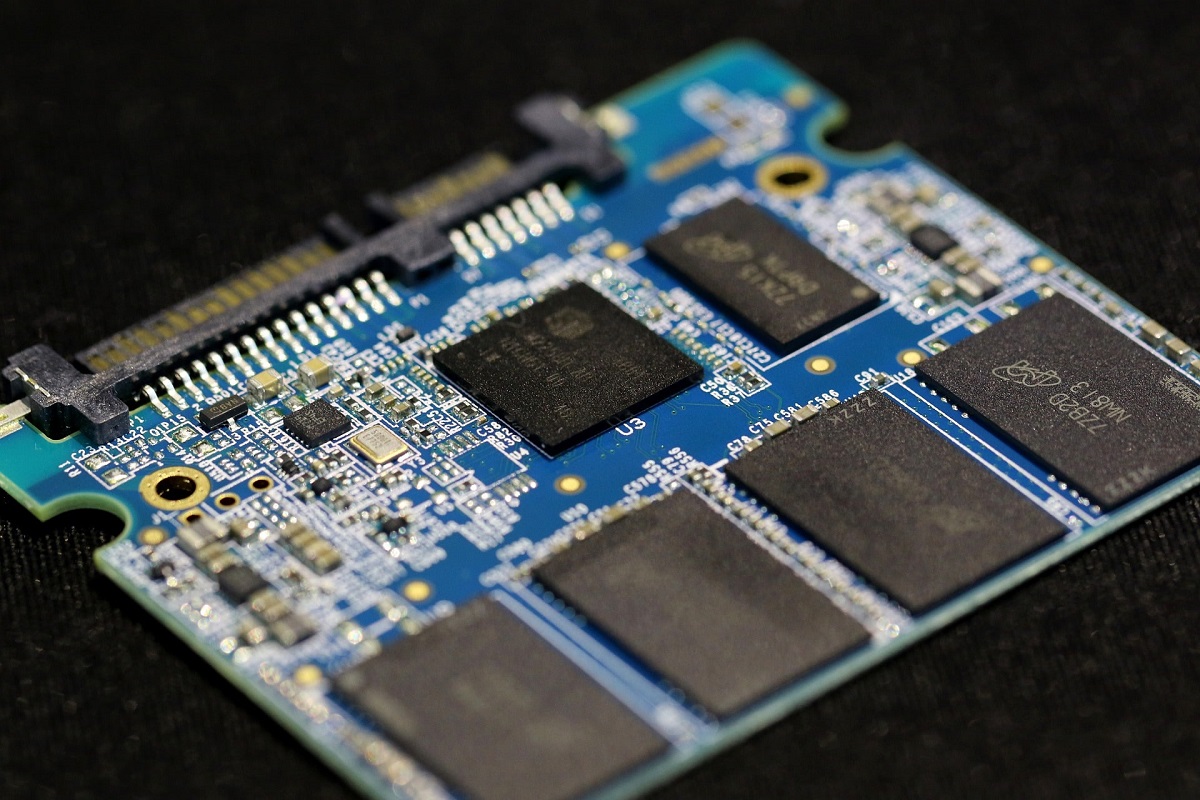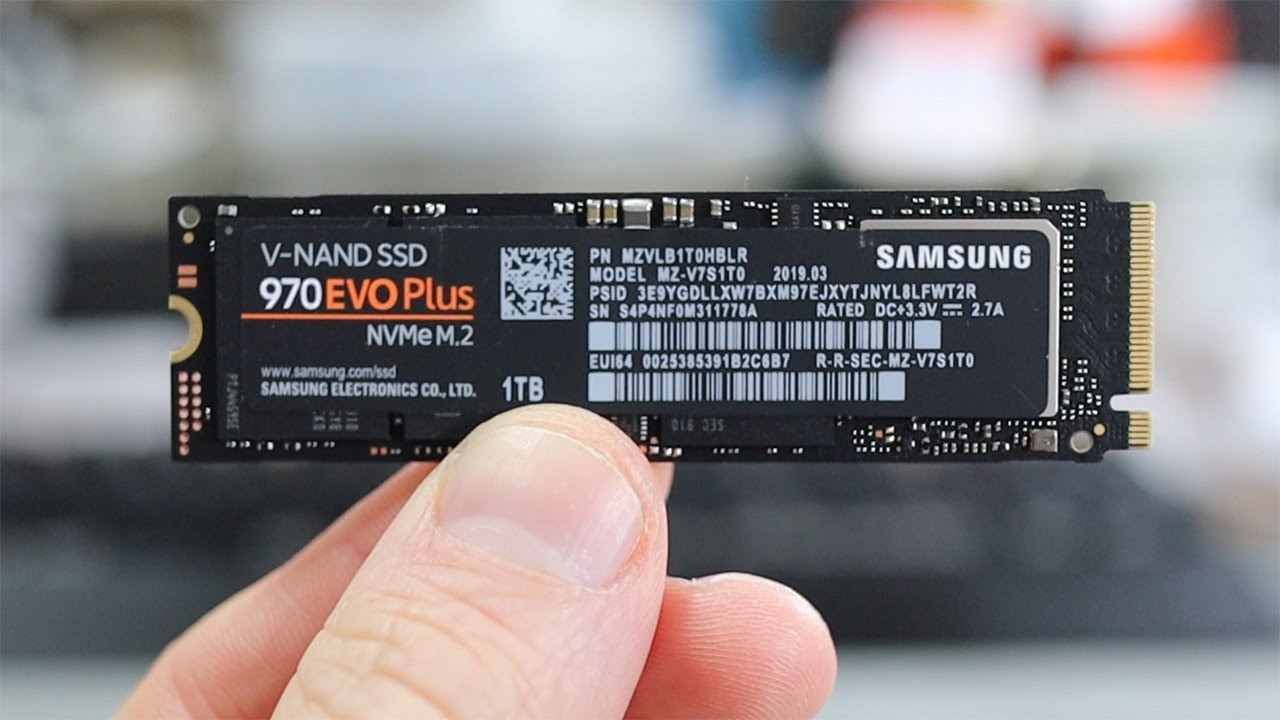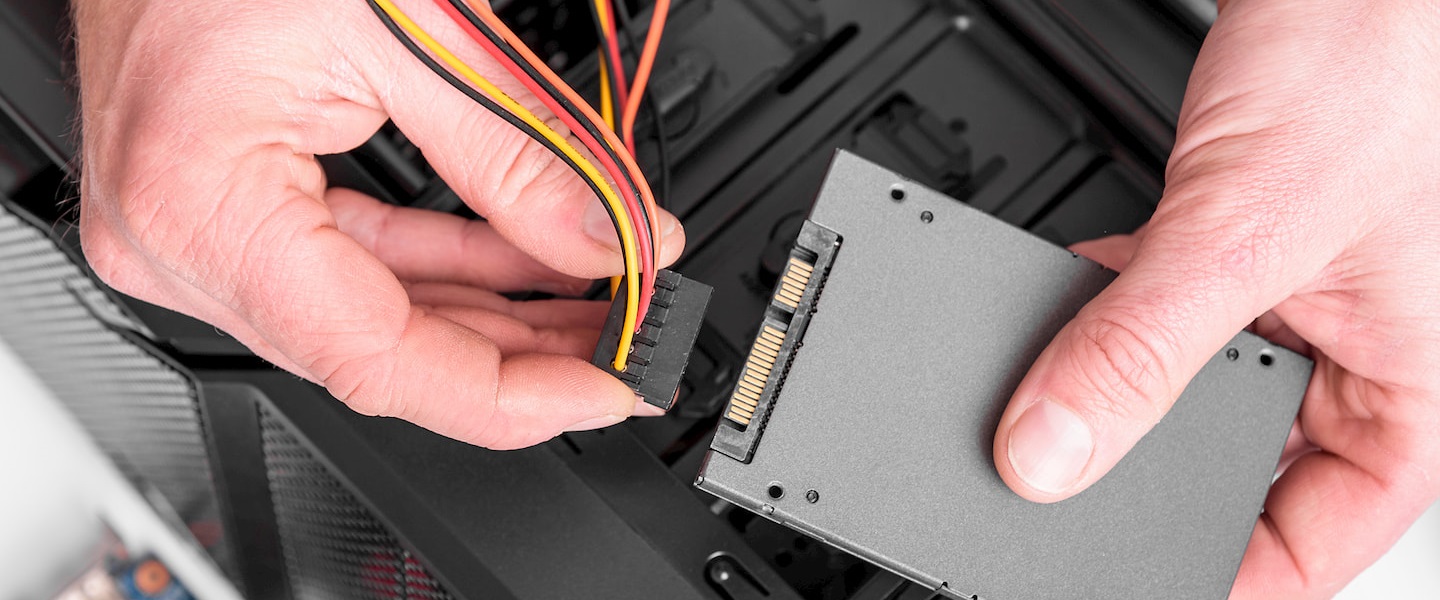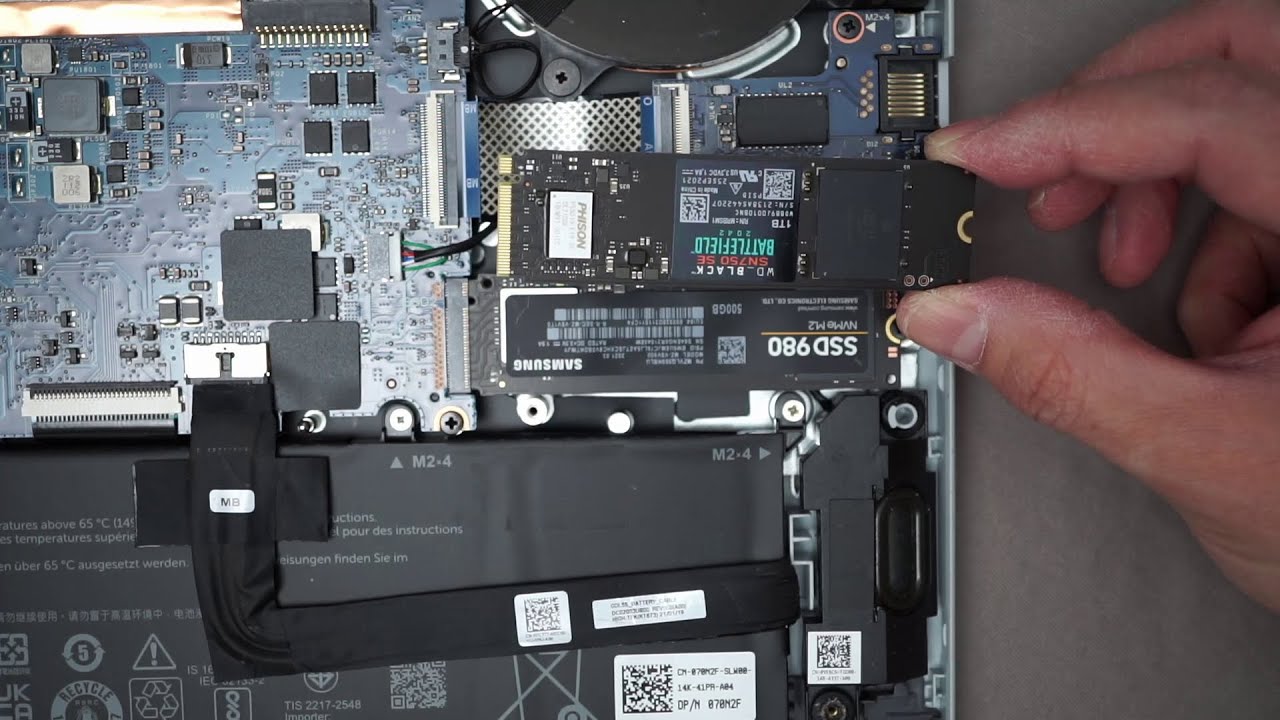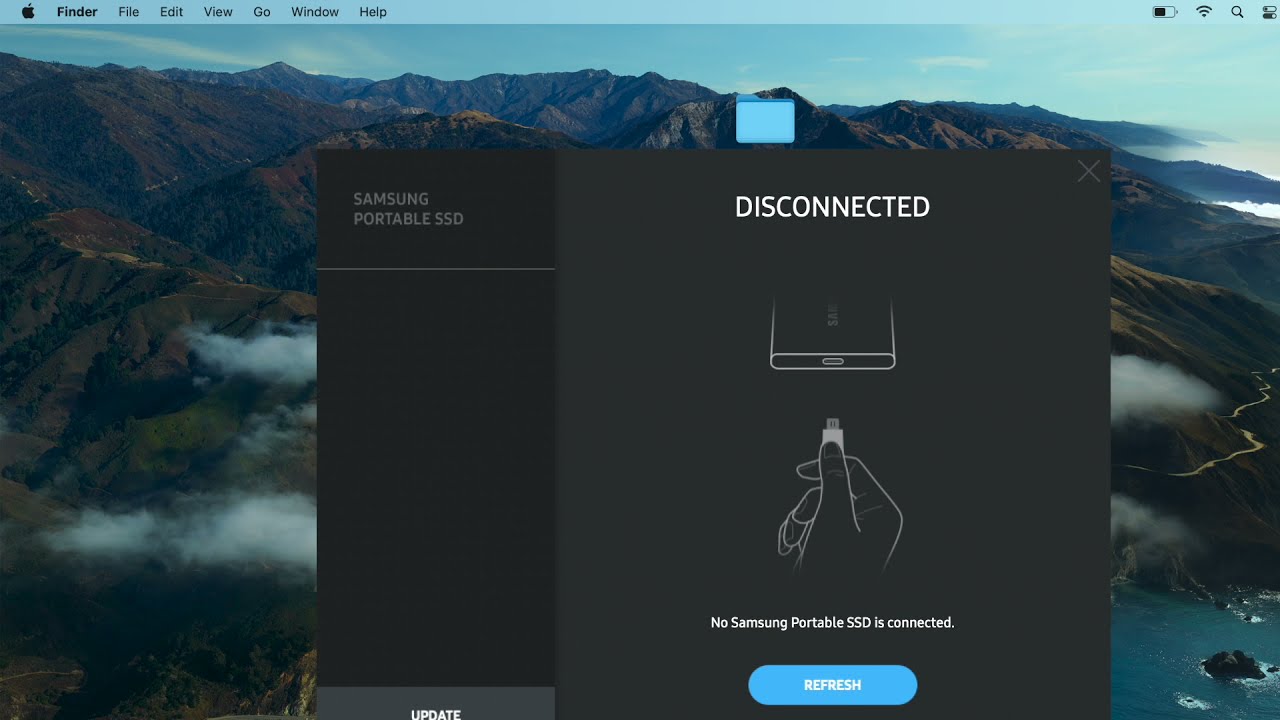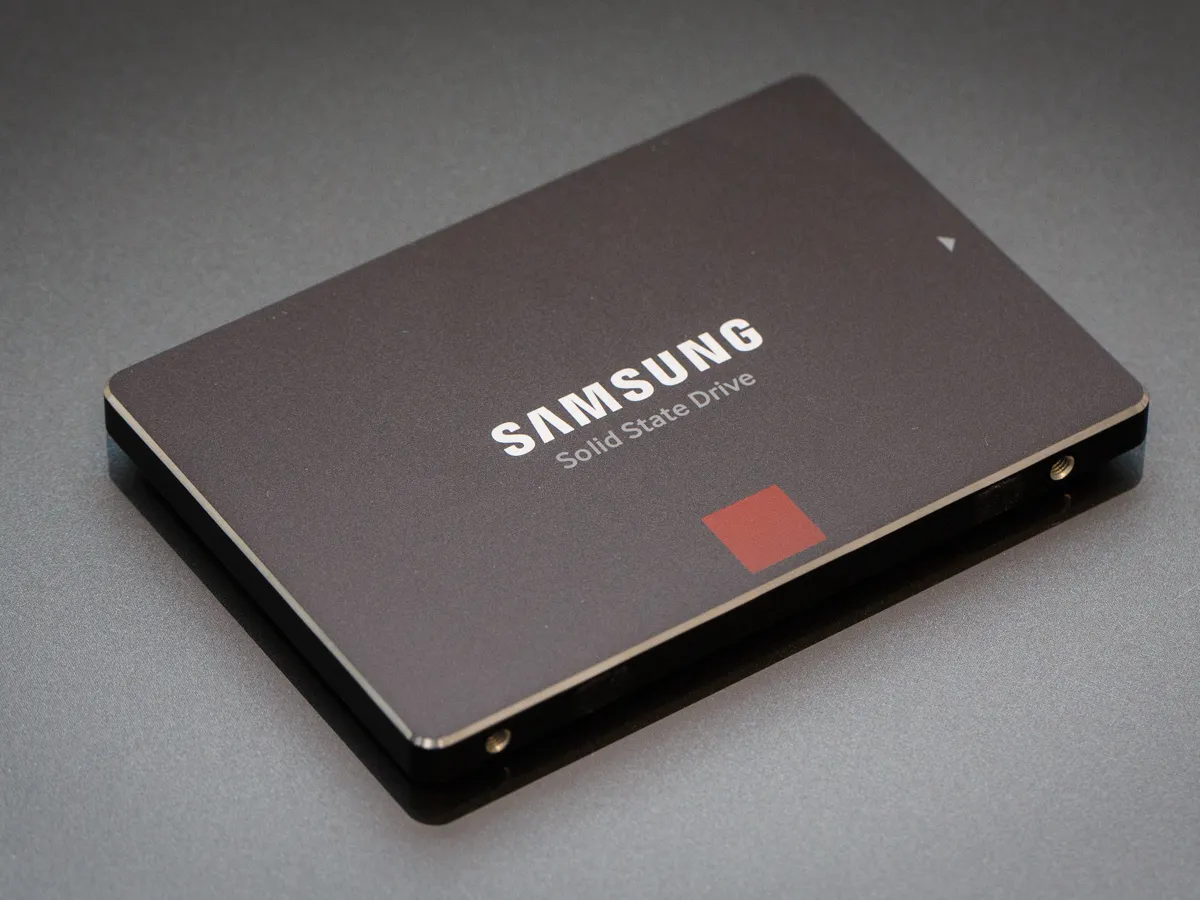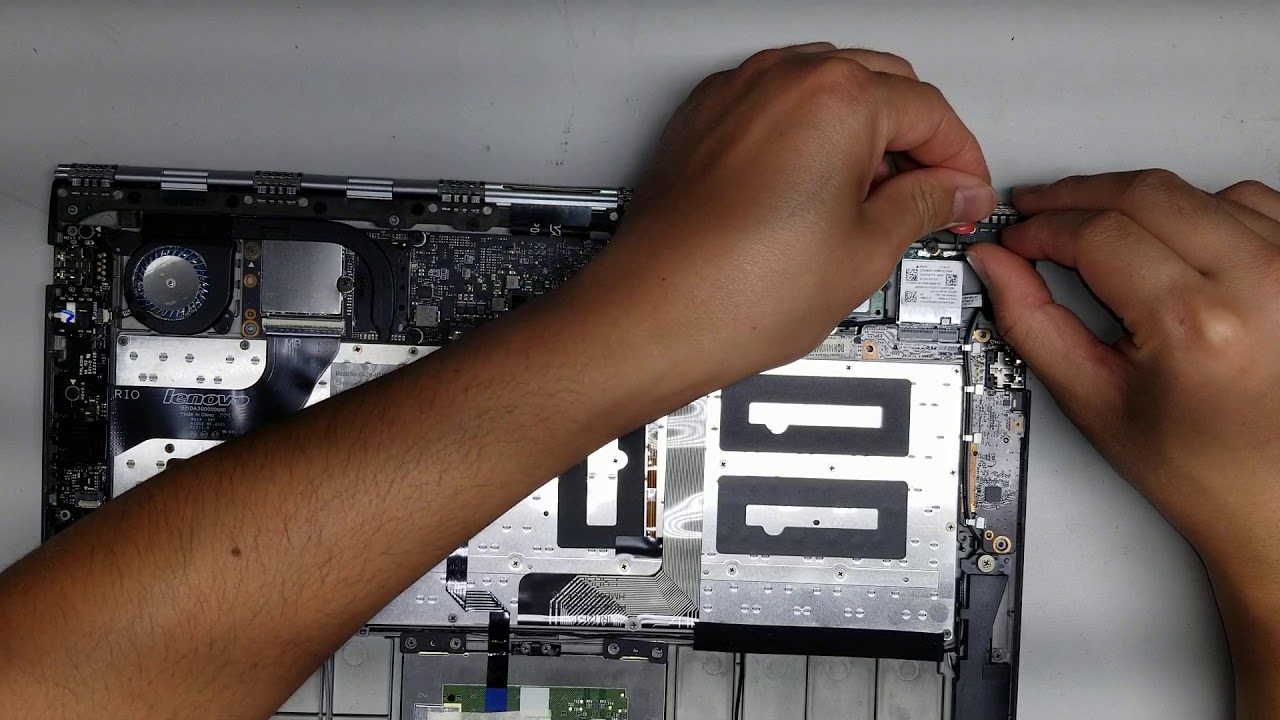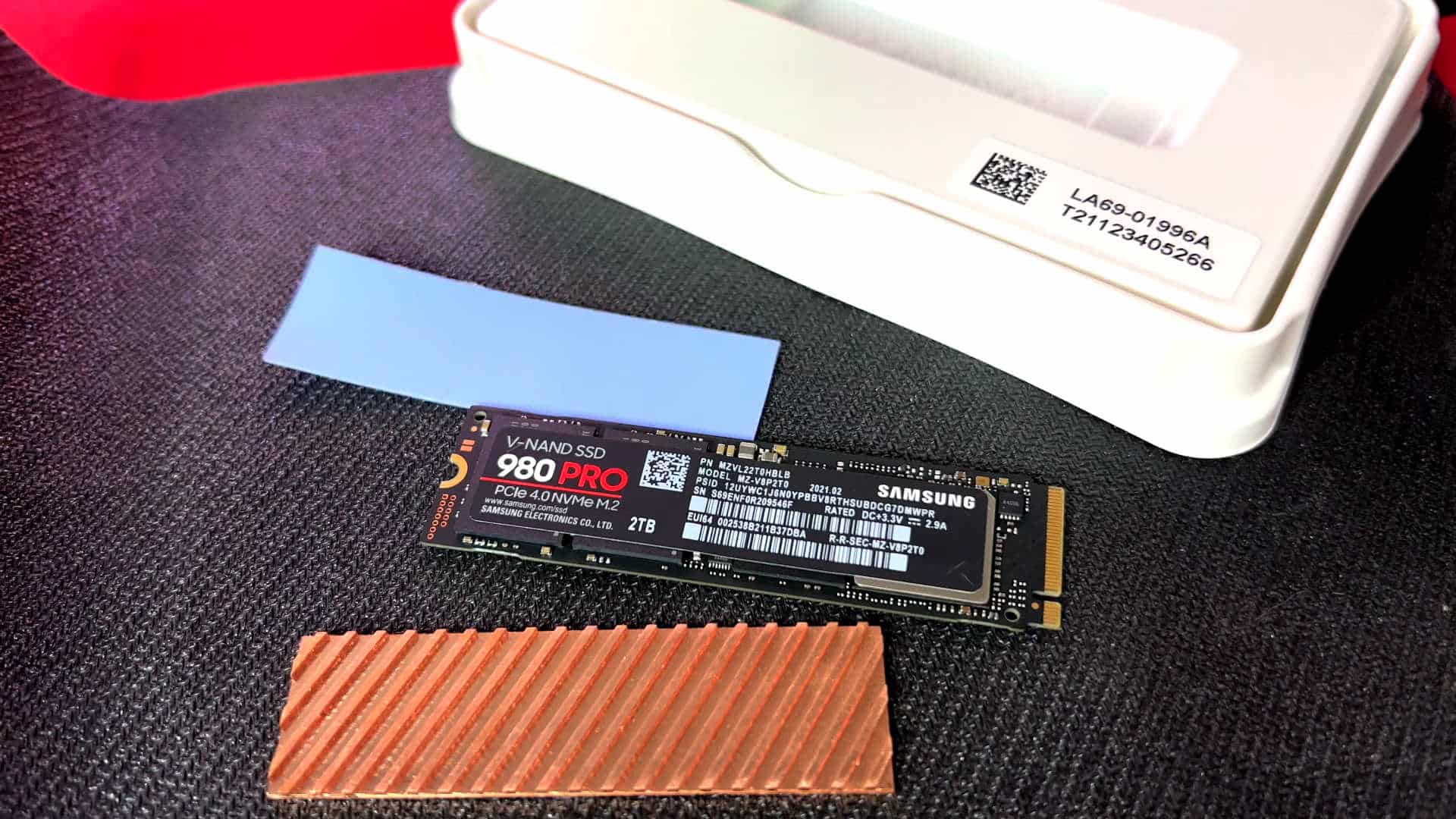Introduction
The solid-state drive (SSD) has become the go-to storage solution for many computer users due to its fast performance and reliability. However, like any other piece of hardware, SSDs can experience issues over time. It is crucial to regularly check if your SSD is working properly to ensure data integrity and prevent potential failures.
In this article, we will guide you through the process of checking the health and performance of your SSD. We will explore various methods that allow you to assess the overall condition of your drive, including built-in tools in Windows, third-party software, monitoring temperature, inspecting S.M.A.R.T. attributes, running surface tests, and checking for firmware updates.
By following these steps, you can identify any potential problems with your SSD early on and take appropriate measures to resolve them. Regularly assessing your SSD’s health and performance is essential for maintaining its optimal functionality and prolonging its lifespan.
So, if you want to ensure that your SSD is operating at its best and avoid any unexpected data loss or performance issues, read on to discover how to check if your SSD is working properly.
Common Signs of a Failing SSD
While SSDs are known for their reliability, they can still encounter issues over time. It’s important to be aware of the common signs that may indicate your SSD is failing. By recognizing these signs early on, you can take the necessary steps to prevent any potential data loss or system failures.
1. Slow Performance: If you notice that your computer is performing slower than usual, it could be a sign of a failing SSD. Slow boot times, sluggish application launches, and extended file transfer times are all indications that your SSD might be on the verge of failing.
2. File Corruption: Another sign of a failing SSD is frequent file corruption. If you encounter issues where files become inaccessible or you experience data inconsistency, it could be a result of the drive’s deteriorating health.
3. Unexpected Freezing or Crashing: If your computer consistently freezes or crashes while performing tasks, it could be due to an unhealthy SSD. Random system freezes or BSOD (blue screen of death) errors are typical symptoms of a failing drive.
4. Disappearing Files: Files mysteriously disappearing or becoming inaccessible can indicate an issue with your SSD. If you frequently experience missing files or folders, it’s crucial to investigate the health of your SSD.
5. Increased Disk Errors: As an SSD begins to fail, you may notice an increase in disk errors. These errors can be seen in event logs or through error notification messages. It is essential to monitor and address these errors promptly.
6. Strange Noises: While SSDs are typically silent, any unusual clicking or grinding noises coming from your drive can signify a hardware issue. These sounds should never be ignored and should be investigated promptly.
If you notice one or more of these signs, it’s important not to ignore them. Take immediate action to check the health of your SSD using the methods we will discuss in the following sections. By addressing any potential SSD issues early on, you can prevent data loss and ensure the continued smooth operation of your computer.
Step 1: Check SSD Health with Windows Built-in Tools
Windows operating systems offer built-in tools that allow you to assess the health and performance of your SSD. These tools can provide valuable information about the overall condition of your drive.
1. Device Manager: Start by opening the Device Manager in Windows. To do this, right-click on the Windows Start menu and select “Device Manager.” Look for the “Disk Drives” category, and expand it to display the devices connected to your computer.
Find your SSD in the list and right-click on it. Select “Properties” and navigate to the “Driver” tab. Here, you can update the SSD’s driver if necessary.
2. Optimize Drives: Windows also provides a built-in tool called “Optimize Drives” that allows you to optimize the performance of your SSD. To access this tool, open the Windows search bar and type “Defragment and Optimize Drives.” Click on the result that appears.
In the “Optimize Drives” window, you will see a list of all the drives connected to your computer. Locate your SSD and click on the “Optimize” button. This process will ensure that the data on your SSD is organized for faster access.
3. Check Disk Utility: Windows has a utility called “Check Disk” that can scan your SSD for errors and fix them if necessary. To use this utility, open a command prompt as an administrator by searching for “Command Prompt,” right-clicking on it, and selecting “Run as administrator.”
In the command prompt window, type the following command and press Enter: chkdsk [drive letter]: /f
Replace “[drive letter]” with the actual drive letter assigned to your SSD. This command will scan the drive for errors and automatically repair any issues that are found.
By utilizing these built-in tools, you can obtain valuable insights into the health of your SSD and address any potential issues. However, it’s important to note that these tools may not provide advanced diagnostics or detailed information. For more comprehensive analysis, you may need to rely on third-party software, which we will explore in the next section.
Step 2: Use Third-Party Software to Verify SSD Health
While Windows built-in tools provide some basic information about your SSD, third-party software offers more advanced features and detailed diagnostics to thoroughly assess the health of your drive. There are several reliable third-party applications available that can help you verify the health and performance of your SSD.
1. CrystalDiskInfo: CrystalDiskInfo is a popular utility that provides comprehensive information about your SSD’s health and performance. It displays essential data, such as temperature, power-on hours, firmware version, and S.M.A.R.T. attributes. CrystalDiskInfo is easy to use and supports various SSD brands.
2. SSD Life: SSD Life is another reliable tool that analyzes the health of your SSD and estimates its remaining lifespan. It offers an intuitive interface, S.M.A.R.T. monitoring, and real-time notifications about your SSD’s condition.
3. Samsung Magician: If you have a Samsung SSD, Samsung Magician is a dedicated utility that provides detailed information about your drive’s health and performance. It offers features like firmware updates, performance optimization, and secure drive erasure.
4. Intel SSD Toolbox: Intel SSD Toolbox is designed specifically for Intel SSDs and provides insights into your drive’s health, performance, and functionality. It enables firmware updates, secure erasing, and diagnostic scans to assess your SSD’s overall condition.
When using third-party software, it’s important to download them from reputable sources and ensure they are compatible with your SSD. These tools offer a deeper analysis of your drive’s health and can help identify any underlying issues that may not be visible through Windows built-in tools.
By regularly running these third-party utilities, you can stay informed about your SSD’s health, monitor any changes over time, and address any potential issues before they escalate. This proactive approach can help ensure the longevity and optimal performance of your SSD.
Step 3: Check SSD Performance and Speed
In addition to monitoring the health of your SSD, it’s essential to assess its performance and speed to ensure optimal functionality. Checking the performance of your SSD can help identify any bottlenecks or issues that may be affecting its overall speed.
1. CrystalDiskMark: CrystalDiskMark is a widely used benchmarking tool that measures the read and write speeds of your SSD. It provides detailed information about sequential and random performance, allowing you to compare your SSD’s performance with industry standards.
To use CrystalDiskMark, download and install the software, then select your SSD from the drop-down menu. Run the benchmark test, and the results will display the sequential and random read/write speeds of your SSD.
2. AS SSD Benchmark: AS SSD Benchmark is another popular benchmarking utility that measures the speed and performance of your SSD. It assesses both sequential and random read/write speeds, as well as access times and IOPS (input/output operations per second).
Once you have downloaded and installed AS SSD Benchmark, select your SSD from the drop-down menu and click the “Start” button to begin the benchmark test. After the test is complete, you can review the results to evaluate your SSD’s performance.
3. ATTO Disk Benchmark: ATTO Disk Benchmark is a reliable tool for measuring the performance of your SSD. It tests the transfer rates of different file sizes, allowing you to determine your drive’s performance in real-world scenarios.
Download and install ATTO Disk Benchmark, select your SSD, and choose the desired transfer size and total length. Click on the “Start” button to begin the benchmark test. ATTO Disk Benchmark will provide you with a graphical representation of your drive’s read and write speeds.
Regularly checking the performance and speed of your SSD using these benchmarking utilities ensures that any performance degradation or issues are identified. If you notice a decline in your SSD’s performance or speeds that are significantly lower than expected, it may be an indication of a problem that needs to be addressed.
By assessing the performance of your SSD, you can make informed decisions about optimizing its speed or considering an upgrade if necessary. Monitoring and maintaining your SSD’s performance will help ensure a smooth computing experience and enhance overall system responsiveness.
Step 4: Monitor SSD Temperature
Keeping an eye on the temperature of your SSD is crucial for maintaining its optimal performance and preventing potential overheating issues. Excessive heat can significantly impact the lifespan and reliability of your SSD. Fortunately, there are several ways to monitor your SSD’s temperature and take appropriate measures if needed.
1. SSD Manufacturer’s Software: Many SSD manufacturers provide dedicated software that allows you to monitor the temperature of your drive. For example, Samsung provides the Samsung Magician software, which displays the temperature of their SSDs. Check the website of your SSD manufacturer to see if they offer similar software for monitoring temperature.
2. Third-Party Software: There are also third-party applications available that enable you to monitor your SSD’s temperature. Examples include HWMonitor, SpeedFan, and CrystalDiskInfo. These tools provide detailed information about your SSD’s temperature, as well as other critical parameters.
3. BIOS/UEFI: Some computer systems allow you to monitor the temperature of your SSD directly from the BIOS (or UEFI) settings. Access your BIOS/UEFI by restarting your computer and pressing the designated key (such as Del, F2, or F10) during the boot process. Look for temperature monitoring options or hardware information to find the SSD temperature.
Monitoring your SSD’s temperature is essential, especially during prolonged heavy usage or when your computer is operating in a high-temperature environment. If you notice that your SSD is regularly reaching high temperatures, you can take several preventive measures:
– Ensure proper airflow and ventilation inside your computer case. Make sure that the fans are functioning correctly and that there are no obstructions blocking airflow to your SSD.
– Consider using an SSD cooler or heat sink. These accessories can help dissipate heat more effectively and keep the SSD’s temperature within the optimal range.
– Avoid overclocking your system excessively, as this can increase the heat generated by both the CPU and SSD.
Regularly monitoring the temperature of your SSD and implementing preventive measures, if necessary, will help preserve its lifespan and performance. By keeping the temperature in check, you can prevent premature failures and ensure the long-term reliability of your SSD.
Step 5: Inspect S.M.A.R.T. Attributes
The Self-Monitoring, Analysis, and Reporting Technology (S.M.A.R.T.) is a feature built into modern SSDs that provides valuable insights into the drive’s health and performance. By inspecting the S.M.A.R.T. attributes, you can gather detailed information about your SSD’s condition and detect any potential issues.
1. CrystalDiskInfo: CrystalDiskInfo, as mentioned earlier, is a popular utility that not only reports the temperature but also displays the S.M.A.R.T. attributes of your SSD. Launch the software, select your SSD, and navigate to the “S.M.A.R.T. Info” or “Attributes” tab to view the detailed attributes and their corresponding values.
2. SSD manufacturer’s software: Check if your SSD manufacturer offers dedicated software that provides access to the S.M.A.R.T. data. These tools often display the S.M.A.R.T. attributes in an easily understandable format, allowing you to identify any critical warnings or abnormalities.
3. Third-party utilities: There are also various third-party utilities specifically designed to analyze and interpret the S.M.A.R.T. data of SSDs. Examples include SSD Life, HD Tune, and Hard Disk Sentinel. These utilities provide detailed reports of your SSD’s S.M.A.R.T. attributes with recommendations and warnings if any issues are detected.
When inspecting the S.M.A.R.T. attributes, pay close attention to any attributes that display warnings or show values outside the recommended range. Look for indicators like reallocated sectors, pending sectors, or uncorrectable errors, as these can be signs of potential disk failures.
It is important to note that interpreting S.M.A.R.T. attributes requires some knowledge about their meaning. If you are unsure about the significance of certain attributes, consult the documentation provided by your SSD manufacturer or seek advice from reliable sources.
Regularly inspecting the S.M.A.R.T. attributes of your SSD allows you to detect any potential issues early on and take appropriate action. By staying proactive and addressing any warnings or abnormalities, you can ensure the longevity and reliable performance of your SSD.
Step 6: Run a Surface Test on the SSD
A surface test is a useful method to check the overall integrity of your SSD by scanning for any bad sectors or errors. Running a surface test can help identify potential issues that may not be noticeable through regular usage. Here’s how you can run a surface test on your SSD:
1. Check Disk Utility: Windows provides a built-in utility called “Check Disk” (chkdsk) that can be used to scan your SSD for errors. Open a command prompt as an administrator by searching for “Command Prompt,” right-clicking on it, and selecting “Run as administrator.”
In the command prompt window, type the following command and press Enter: chkdsk [drive letter]: /scan
Replace “[drive letter]” with the actual drive letter assigned to your SSD. The scan will then commence, checking for any errors or bad sectors on your SSD.
2. Third-Party Tools: There are also third-party applications that offer more advanced surface scanning options. Examples include CrystalDiskInfo, HD Tune, and Victoria. These tools provide detailed reports on the health of your SSD and can perform comprehensive surface tests.
First, download and install the preferred third-party tool. Open the program and select your SSD. Look for options related to surface or error scanning. Start the scan, and the tool will thoroughly analyze your SSD and report any issues detected.
It’s essential to note that running a surface test may take some time, especially if your SSD has a large storage capacity. It’s recommended to allocate sufficient time for the test and avoid interrupting the process to ensure accurate results. Additionally, keep in mind that performing a surface test may put some stress on your SSD, so it’s generally advisable to run it periodically rather than excessively.
By running regular surface tests on your SSD, you can detect any potential errors or bad sectors early on. Addressing these issues promptly can help prevent data corruption and maintain the overall performance and reliability of your SSD.
Step 7: Check for Firmware Updates
Keeping your SSD’s firmware up to date is crucial for ensuring optimal performance, stability, and compatibility with your system. Firmware updates often include bug fixes, performance enhancements, and new features that can improve the overall functionality of your SSD. Follow these steps to check for firmware updates:
1. Check the SSD Manufacturer’s Website: Visit the official website of your SSD manufacturer and navigate to the support or downloads section. Look for the firmware updates specific to your model of SSD.
2. Download and Install Firmware Updates: Once you have identified the latest firmware version for your SSD, carefully read the instructions provided by the manufacturer. Follow the instructions to download and install the firmware update onto your SSD.
3. Backup Your Data: Before proceeding with a firmware update, it’s essential to backup your important data. Although rare, there is a small risk associated with firmware updates and data loss. Creating a backup ensures you can recover your data if any issues arise during the update process.
4. Follow Update Instructions: It is crucial to follow the manufacturer’s instructions precisely during the firmware update. This may involve running a specific utility, connecting your SSD to a specific port, or enabling a certain mode on your system. Deviating from the instructions may result in unexpected consequences.
5. Monitor the Update Process: During the update, closely monitor the progress and make sure not to interrupt it. Avoid restarting your computer or disconnecting the SSD until the update is complete. Interrupting the process may lead to firmware corruption and potential damage to your SSD.
Regularly checking for firmware updates and keeping your SSD’s firmware up to date is crucial for maintaining its optimal performance and compatibility. Firmware updates often address known issues, enhance performance, and introduce new features, ensuring that your SSD functions at its best.
Remember to check for firmware updates periodically, as manufacturers may release new versions over time. By keeping your SSD’s firmware current, you can take advantage of the latest advancements and optimize the performance of your SSD.
Conclusion
Regularly checking the health, performance, and temperature of your SSD is crucial for maintaining its optimal functionality and preventing any potential issues. By following the steps outlined in this guide, you can ensure that your SSD is working properly and maximize its lifespan.
From using Windows built-in tools to third-party software, there are various methods available to assess the health and performance of your SSD. Monitoring the temperature and inspecting the S.M.A.R.T. attributes provide valuable insights into the overall condition of your drive.
Running a surface test helps identify any errors or bad sectors in your SSD, enabling you to address them promptly. Additionally, checking for firmware updates regularly ensures that your SSD is up to date with the latest bug fixes, performance enhancements, and new features.
Remember to take appropriate preventive measures, such as maintaining proper airflow and ventilation, to minimize the risk of overheating and prolong the lifespan of your SSD.
By following these steps and incorporating them into your routine maintenance schedule, you can ensure that your SSD operates smoothly, delivers optimal performance, and remains a reliable storage solution for all your needs.
Take the time to regularly check your SSD for any signs of failing, monitor its temperature, and keep its firmware updated. By doing so, you can enjoy the benefits of a properly functioning SSD and avoid any unexpected data loss or performance issues.







